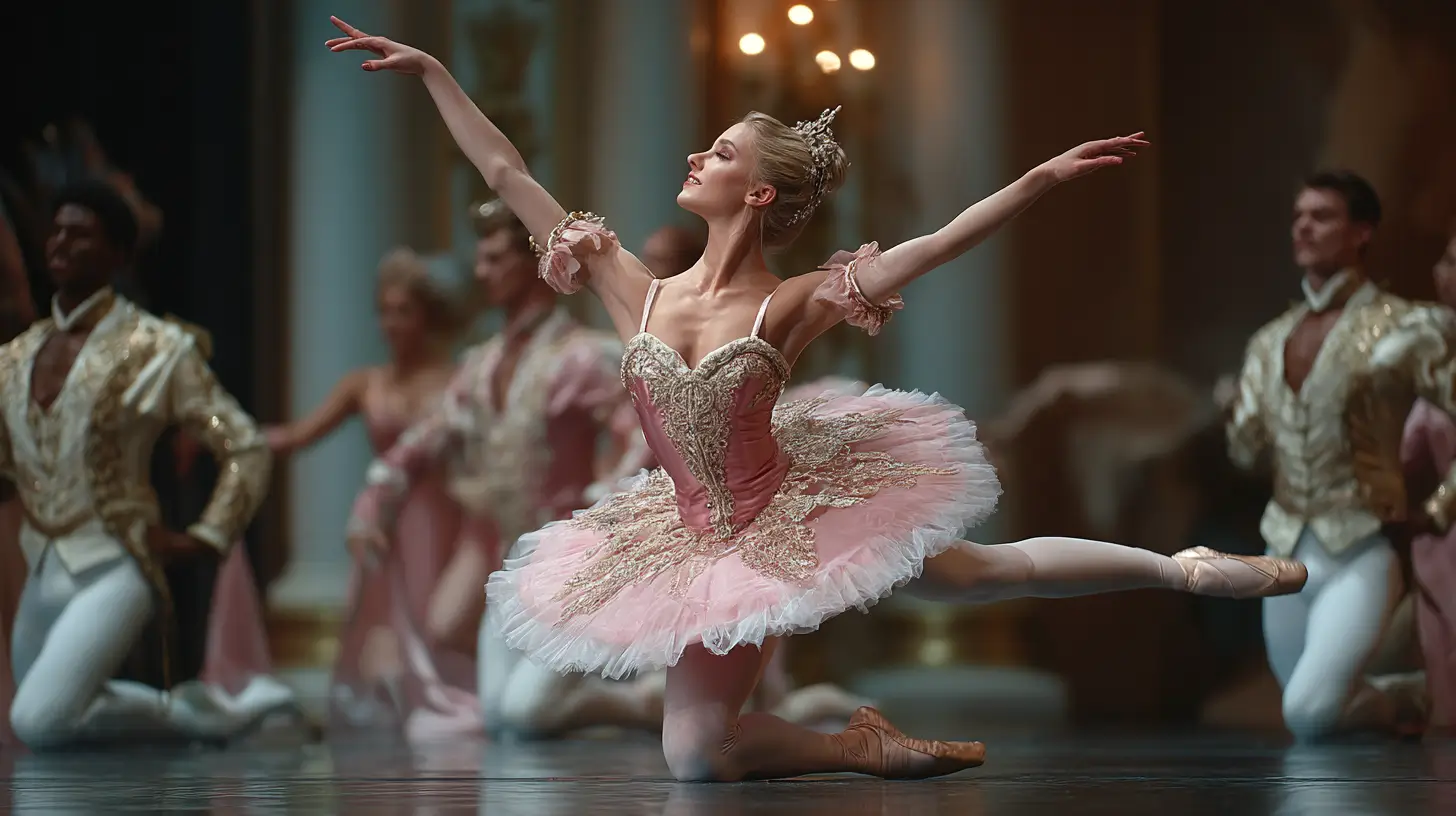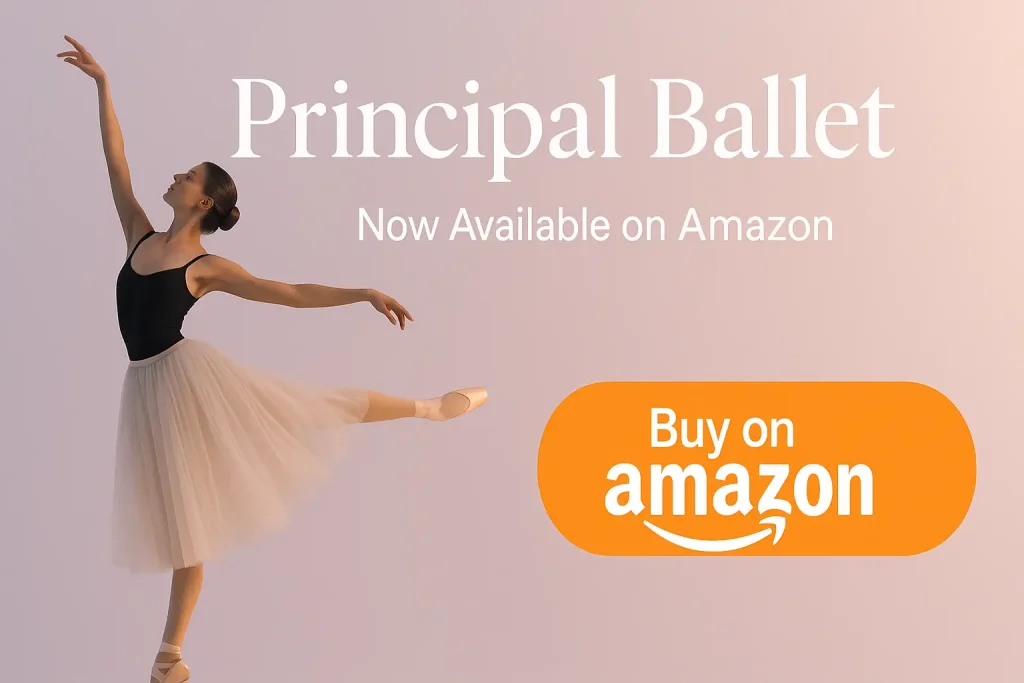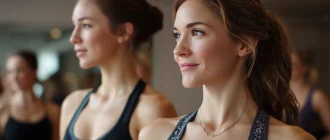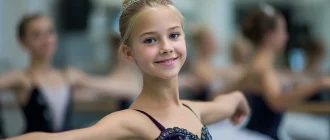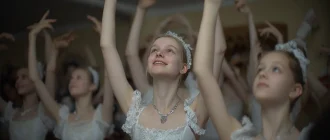Are you wondering how to become a principal ballerina? This article breaks down the journey from foundational training as a young dancer to reaching the pinnacle of a ballet career. Discover the necessary steps, including intense practice, competitions, joining a company, and continuously improving your technical and artistic skills.
Graceful Insights
- Early and rigorous ballet training is essential for aspiring principal ballerinas. Training typically begins very young and requires a daily commitment to technique and practice.
- Success in ballet auditions and subsequent progression from corps de ballet to principal dancer demands exceptional talent, dedication, and the ability to adapt to the artistic director’s vision.
- Continual education and mentorship are crucial in developing dancers, allowing them to stay relevant in the industry and cultivate leadership within ballet companies.
Art de Podcast
Laying the Foundation: Early Ballet Training
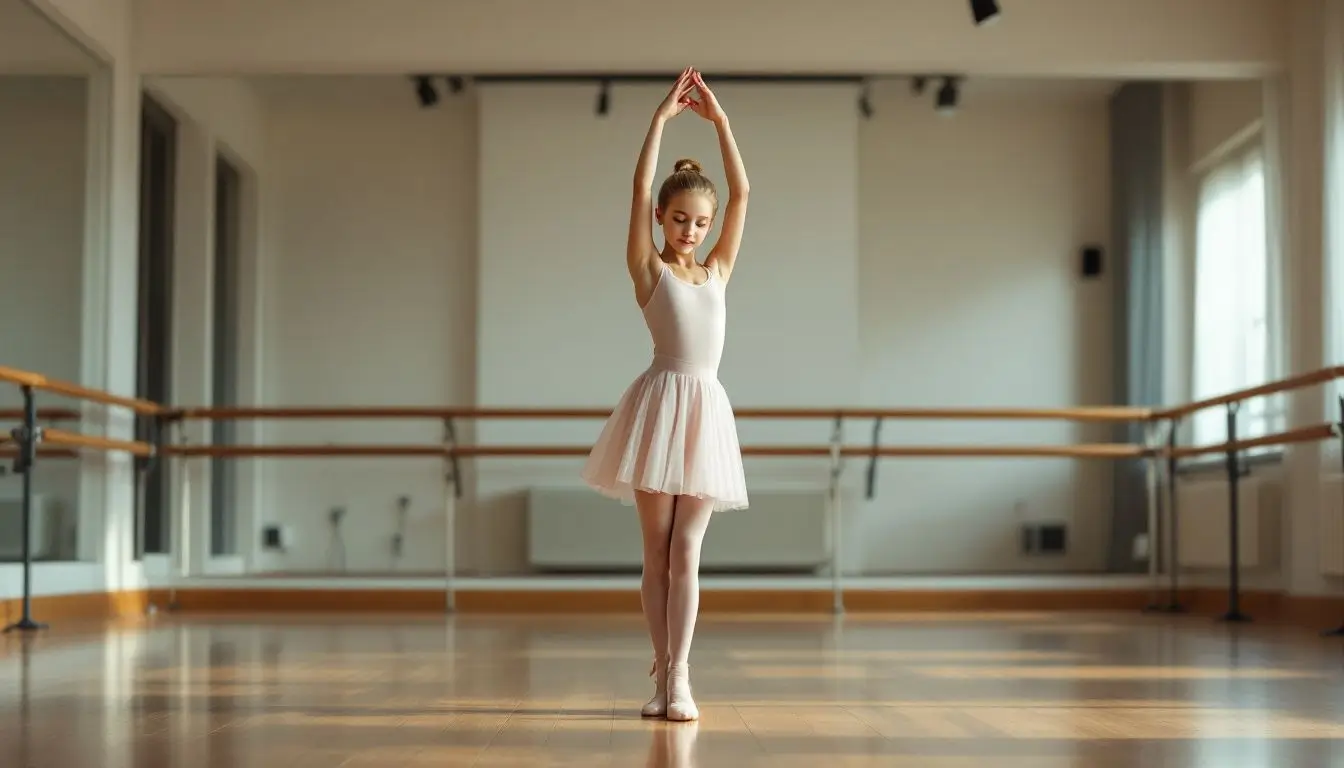
Becoming a principal ballerina often begins at a very young age. Many dancers start ballet training as early as three or four years old, establishing a strong foundation for their future careers. This early start allows aspiring dancers to develop essential skills in technique, artistry, and performance, which are crucial for their progression in ballet.
Rigorous training is a hallmark of a prima ballerina’s journey. It involves mastering foundational ballet techniques, alignment, precision of movement, and an understanding of musicality. The exhaustive regimen required to reach the level of a prima ballerina cannot be overstated. This early dedication to ballet training sets the stage for a lifelong commitment to excellence and artistry.
Starting Young and Training with the Best
Becoming a prima ballerina requires a strong foundation in ballet training, often beginning at a young age. Many professional dancers start taking ballet classes between the ages of 5 and 7, with some beginning as early as 3 years old. Aspiring dancers attend prestigious ballet schools or academies and receive rigorous training in classical ballet techniques, pointe work, and other dance styles.
To become a principal dancer, one must have a unique combination of raw talent, physical characteristics, and classical ballet training. It’s not unusual for a ballerina to begin taking dance classes at age seven or younger and focus on improving and perfecting their technique, usually with several hours of private daily lessons. Many are accepted to dance schools associated with major ballet companies like the American Ballet Theatre. These schools provide an environment where young dancers can thrive, learning from experienced instructors and gaining exposure to the professional world of ballet.
Daily Classes and Practice
Aspiring ballerinas often immerse themselves in daily classes and practice sessions, dedicating several hours daily to honing their craft. These classes typically occur six days a week, reflecting their unyielding commitment to perfecting the basics and developing a technically proficient dancer.
The average age at which dancers begin this intense training regimen is relatively young, often during their teenage years, when private lessons also become a common feature of their routine. This is where approximate age data regarding the onset of serious ballet training can be found.
The daily practice and classes are not just about physical training; they also instill discipline, work ethic, and a deep understanding of the art form. The average time spent in these sessions is a testament to the dedication needed to succeed in ballet. Aspiring dancers must embrace this rigorous schedule, understanding that it is the foundation upon which their future careers will be built.
Importance of Competitions and Performances
Competitions and performances are vital in the development of pre-professional dancers. Participating in these events helps young dancers build stage presence and gain invaluable experience performing in front of an audience. Like sports teams, ballet dancers must perform under pressure, and these experiences are crucial for their growth and confidence on stage.
Moreover, competitions and performances open doors to numerous opportunities within the ballet industry. A strong stage presence and recognition gained through these events can significantly influence a dancer’s chances of being noticed by major ballet companies. For many aspiring dancers, these events are stepping stones that pave the way for their future careers in the ballet world.
Joining a Professional Ballet Company
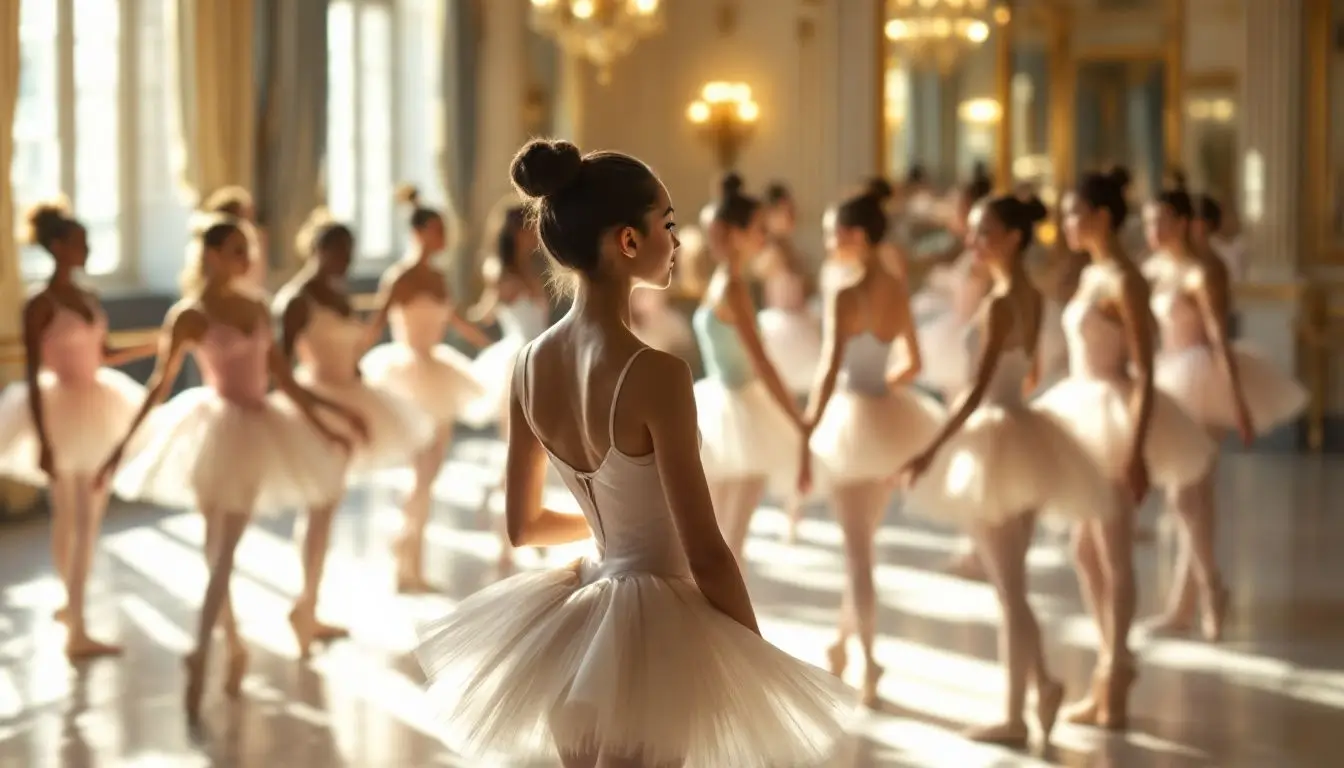
Joining a professional ballet company is a significant milestone in an aspiring dancer’s career. Ballet auditions serve as a crucial gateway, allowing dancers to showcase their skills and gain entry into the professional world. These auditions often involve multiple rounds, requiring dancers to learn and perform specific choreography in front of judges.
The journey from auditioning to joining a ballet company is filled with challenges. Once accepted, dancers must navigate the competitive environment and work tirelessly to progress within the company. The transition from corps de ballet to soloist roles, and eventually to principal dancer, in one season requires exceptional talent, dedication, and the ability to adapt to the artistic director’s vision.
Auditioning for Major Ballet Companies
The audition process for major ballet companies is highly competitive and demanding. Aspiring ballerinas typically start their training at a young age, often around seven years old or younger, underscoring the importance of early preparation. Participating in performances throughout their training helps dancers hone their skills and gain stage exposure, which is crucial for success in auditions.
Success in auditions requires exceptional technical skills, physical capabilities, and artistic expression. Dancers must stand out by demonstrating their unique qualities and ability to perform demanding choreography.
The intense competition among aspiring dancers means that only those with the highest talent and dedication will succeed. Winning major competitions can also facilitate recruitment into prestigious studios and companies, providing important career opportunities.
Moving Up the Ranks: Corps de Ballet to Soloist
Transitioning from corps de ballet to soloist roles is critical in a dancer’s career. This progression is highly influenced by a dancer’s talent, dedication, and the artistic director’s vision. Dancers must continue their training to stay relevant and meet the demands of modern ballet styles and techniques.
Staying updated with new dance styles and techniques is essential for dancers to remain relevant in a changing industry. This ongoing training ensures they are prepared for the challenges and opportunities of soloist roles in different companies.
The journey from corps de ballet to soloist is a testament to a dancer’s resilience and commitment to their craft.
Achieving Principal Dancer Status
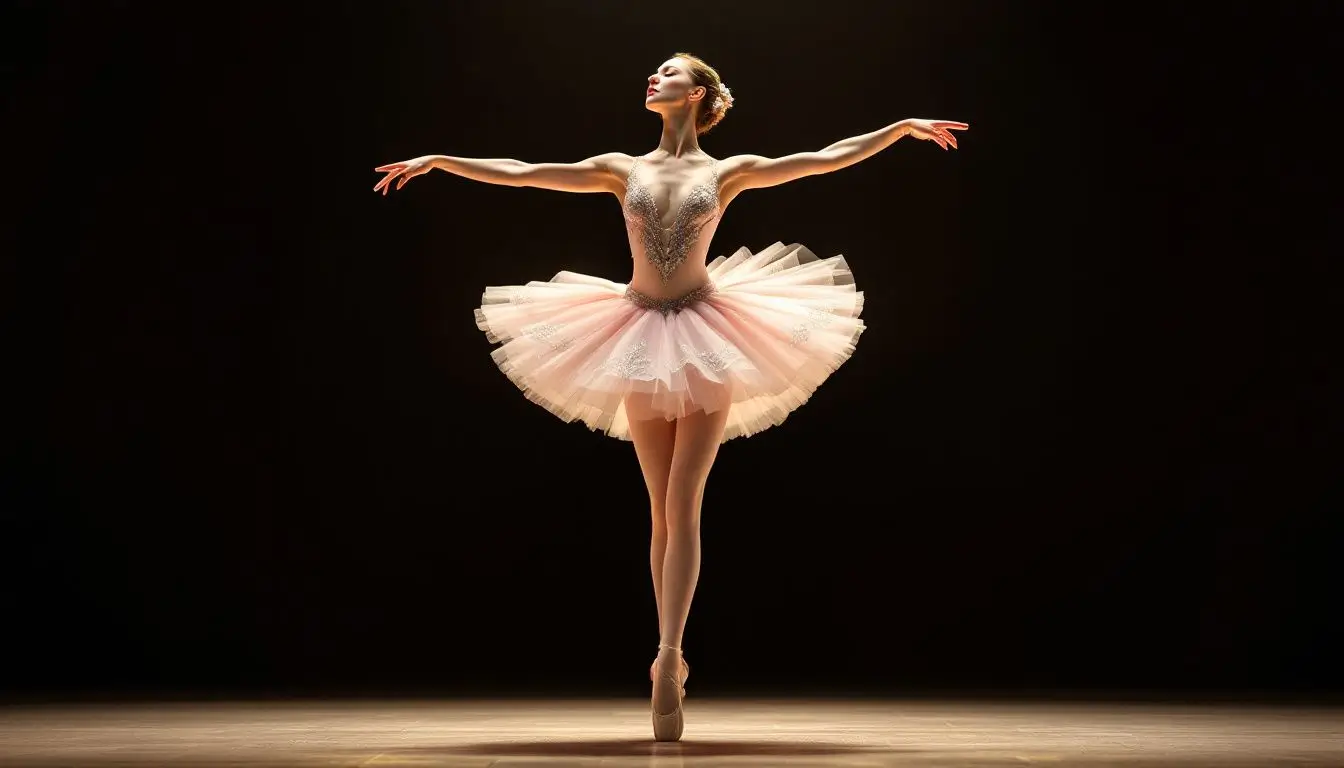
Achieving the status of a principal dancer is the pinnacle of a ballet career. This elite level requires years of rigorous training, dedication, and exceptional talent. Talented, work ethic, and the artistic director’s vision influenced the path to becoming a principal dancer. The title “prima ballerina” is reserved for female dancers who hold leading roles in a ballet company.
Becoming a principal dancer involves continuous artistic growth and the ability to perform principal roles excellently. Notable examples include Misty Copeland, who became the first African American female principal dancer at the American Ballet Theatre in 2015, and Isabella Boylston, who achieved the prima ballerina at 29.
Technical Excellence and Artistic Expression
Technical brilliance is a cornerstone of a prima ballerina’s skill set. This includes mastering nuanced technical details such as pointed toes and fluid port de bras, which contribute significantly to a dancer’s overall excellence. The ability to perform intricate choreography seamlessly is essential for a prima ballerina.
However, technical skills alone are not enough. A ballerina must also convey emotion through her dance, harmoniously integrating her technical prowess with her emotional expression. This combination of technical and artistic skills is what sets a principal dancer apart and allows her to captivate audiences.
Leadership and Influence within the Company
Leadership qualities are essential for a prima ballerina to guide and influence the company. A prima ballerina embodies leadership and mentorship within a single company, inspiring other dancers to elevate their performance. This role involves shaping the company’s artistic direction and fostering cohesion within the dance company.
A prima ballerina’s influence extends beyond her performances. She is pivotal in mentoring younger dancers and helping them navigate their careers. This leadership and mentorship help create a supportive and nurturing environment within the ballet company.
Career Progression and Job Growth
Becoming a principal dancer is a long and winding road, with dancers jumping between several schools and companies to reach their goals. Principal dancers at American Ballet Theatre (ABT) and New York City Ballet (NYCB) typically start training at a young age, with 13 being considered a late start. ABT’s principal dancers often interact with the company through the studio company in their late teenage years.
The studio company bridges student and professional training, allowing dancers to continue training while performing in productions alongside the company. ABT recruits dancers from competitions like the Youth America Grand Prix’s New York Finals. ABT has more international diversity than NYCB, with dancers from various countries, including South Korea, England, Argentina, and Ukraine. This diversity enriches the company’s performance and provides a broader range of experiences for the dancers.
Years of Experience and Job Growth Trends
The years it takes to become a principal dancer vary by company. A dancer typically works her way up through the corps de ballet and soloist ranks before becoming a principal dancer. This can take years or happen relatively quickly. Ballerina Alessandra Ferri was named prima while dancing for London’s Royal Ballet at age 19.
Male and female principal dancers have relatively short careers that typically last until their late 30s or slightly longer. After retiring from performing, many turn to teaching, running a ballet company, or choreographing. Employment of ballerinas and other types of dancers is projected to grow at the same rate as other professions through 2026.
However, dancing is very competitive, and the number of aspiring dancers far exceeds those who get paying jobs in the industry. This competitive landscape underscores the importance of dedication, resilience, and continuous improvement.
Overcoming Challenges and Sacrifices
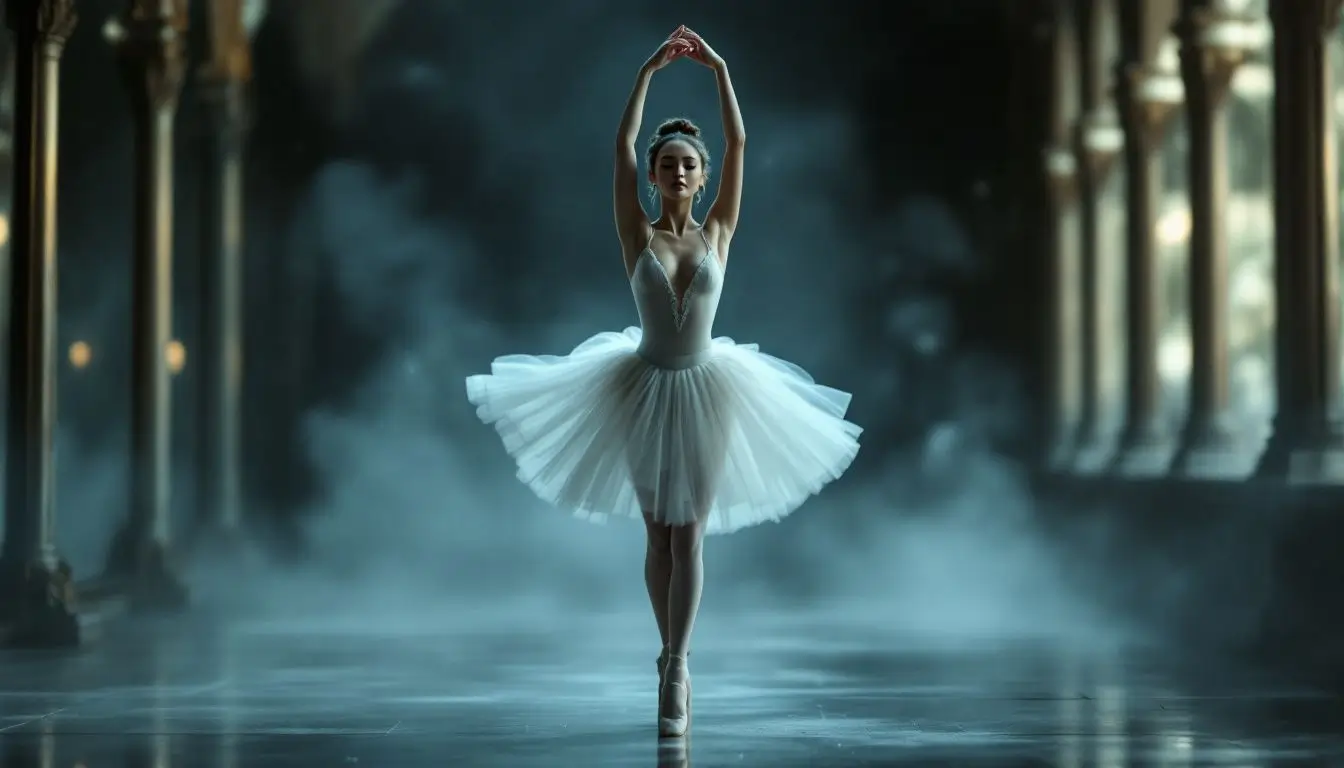
The journey to becoming a principal ballerina is fraught with challenges and sacrifices. Dancers often face difficulties separating their career trajectory from their self-worth. Resilience and dedication are essential for overcoming these challenges and achieving success in ballet. The typical career length of a principal ballet dancer generally lasts until the late 30s or slightly longer, with the average retirement age for female principal dancers being approximately 38.4 years.
In addition to physical challenges, dancers must also navigate personal sacrifices. Balancing a professional ballet career often results in significant sacrifices in personal relationships and social life. Becoming a principal ballerina involves substantial personal sacrifices that can impact various aspects of life.
Injury Risks and Recovery
Ballet dancers commonly face injury risks, including stress fractures, tendonitis, and acute injuries like sprains. These injuries can lead to prolonged recovery periods and impact physical ability and mental well-being.
The recovery process is often long and arduous, requiring dancers to maintain resilience and dedication. Proper injury management and rehabilitation are crucial for a dancer’s return to peak performance. The ability to overcome injuries is a testament to a dancer’s strength and determination.
Personal Sacrifices
Personal sacrifices are an inherent part of a professional ballet career. The demanding rehearsal schedules often result in dancers compromising their personal relationships and social life. Becoming a principal ballerina involves significant personal sacrifices that can impact various aspects of life.
Balancing a professional ballet career with a personal life requires substantially reduced time spent with family and friends. Dancers’ dedication to the art form often means prioritizing their careers over other aspects of their lives, which can be challenging but necessary for achieving their ultimate goal.
The Role of Mentorship and Continuing Education
Mentorship is crucial for dancers’ career development, and continuing education significantly contributes to their growth. Principals often mentor younger dancers, providing guidance and helping them navigate their early careers. A principal dancer’s influence can shape the culture and dynamics within the ballet company.
Education is crucial for dancers to remain relevant and adapt to the industry’s evolving demands. This continuous learning ensures dancers are prepared for new roles and techniques, fostering professional growth and artistic development.
Learning from Experienced Dancers
Learning from experienced dancers provides invaluable insights into the complexities of the art form and industry. Seasoned dancers offer critical feedback that helps develop an aspiring dancer’s technique and performance skills. This mentorship helps newcomers navigate the dance industry and refine their artistic talents.
Experienced dancers can also share their connections and resources, significantly benefiting aspiring dancers in their career advancement. The guidance from mature dancers is essential to a dancer’s growth and success.
Adapting to New Techniques and Styles
Continuous training is essential for adapting to ballet’s evolving roles and techniques. The art form constantly changes, requiring dancers to be flexible and open to new styles. Ongoing education and adaptation are crucial for staying relevant in an ever-evolving industry.
Embracing new techniques and styles ensures that dancers remain at the forefront of the art form. This continuous learning is a straightforward way to maintain technical brilliance and artistic expression, allowing dancers to excel in their careers.
Notable Companies and Opportunities
Several notable ballet companies offer opportunities for aspiring dancers to grow and develop their careers. American Ballet Theatre (ABT) is one of the most prestigious ballet companies in the world, with a rich history of producing talented dancers. New York City Ballet (NYCB) is another prominent company that offers a range of opportunities for dancers to perform and grow.
Other notable companies include the Royal Ballet, the Bolshoi Ballet, and the Mariinsky Ballet. These companies offer dancers a range of opportunities to perform in productions, work with renowned choreographers, and develop their skills and techniques. Many companies have associated schools and training programs, allowing young dancers to build skills and prepare for ballet careers. These institutions are instrumental in shaping the future of ballet and nurturing the next generation of principal dancers.
Notable Prima Ballerinas and Their Journeys
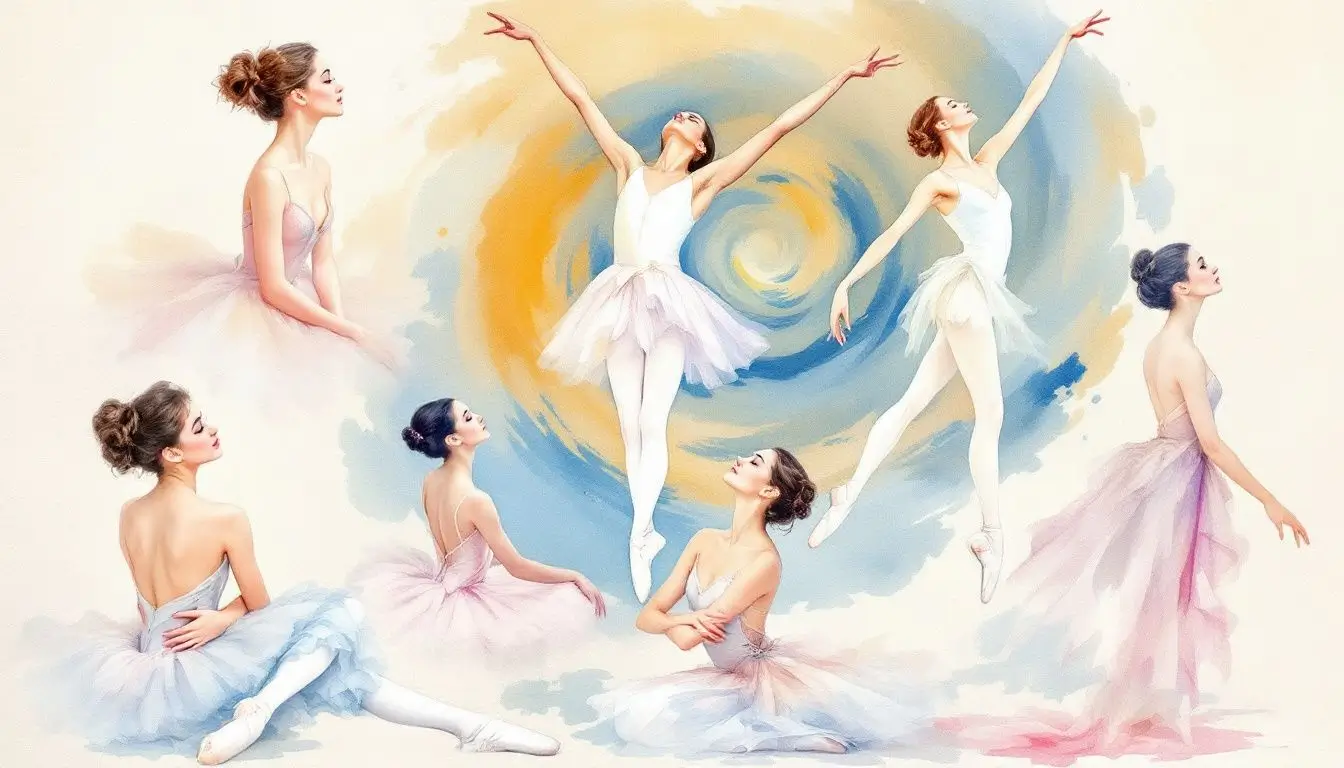
The journeys of notable prima ballerinas offer inspiration and insight into the dedication required to achieve this status. Detecting leading dancers in unranked companies presents unique challenges, emphasizing the importance of using reliable primary sources to track data on these dancers.
Some of the most celebrated prima ballerinas who have made significant contributions to ballet include:
- Maya Plisetskaya
- Misty Copeland
- Sylvie Guillem
- Marianela Núñez
These dancers faced unique challenges and made remarkable career achievements. Their stories highlight the importance of perseverance, resilience, and artistic expression in pursuing excellence. Learning from their journeys provides aspiring, leading, and professional dancers with valuable lessons.
Misty Copeland
Misty Copeland’s rise to prominence in the ballet world has been nothing short of inspirational. Celebrated for her groundbreaking achievements, Copeland made history by becoming the first African American female principal dancer with the American Ballet Theatre in 2015. Her journey has not only been about her remarkable talent and perseverance but also about breaking barriers and promoting diversity within the ballet community.
Copeland’s influence extends beyond her performances. She has opened doors for greater inclusivity and representation, inspiring a new generation of other women and aspiring dancers from diverse backgrounds. Her story is a testament to the power of determination and an individual’s impact on an entire art form.
Sylvie Guillem
Sylvie Guillem is renowned for her shift from traditional ballet to contemporary dance. She established an independent career that redefined her artistic expression, allowing her to explore new creative avenues and collaborate with various artists beyond the constraints of classical ballet. Guillem’s independent career enabled her to curate her performances and choose collaborations aligned with her evolving artistic vision.
Her journey reflects the importance of flexibility and openness to change in a dancer’s career. Guillem’s ability to adapt and innovate has left a lasting impact on dancers’ work in the dance world, demonstrating that the evolution of a dancer’s artistry can be profound and transformative.
Marianela Núñez
Marianela Núñez’s journey to becoming a principal dancer is a story of dedication and exceptional talent. She became a principal dancer in 2002 and has since played a vital role in The Royal Ballet. Núñez has showcased her talent in numerous principal roles, earning acclaim for her technical brilliance and artistic expression.
Her career at the Royal Ballet highlights the importance of consistent performance and the ability to take on diverse roles. Núñez’s journey inspires aspiring dancers and demonstrates that excellence in ballet can be achieved and sustained with hard work and passion.
Resume
Becoming a principal ballerina requires immense dedication, rigorous training, and continuous growth. From laying the foundation through early ballet training to joining a professional ballet company and moving up the ranks, each step requires unwavering commitment and exceptional talent. The role of mentorship and ongoing education cannot be overstated, as they provide crucial guidance and the ability to adapt to new techniques and styles.
Learning from the experiences of notable prima ballerinas such as Misty Copeland, Sylvie Guillem, and Marianela Núñez offers valuable insights into the challenges and triumphs of a ballet career. Their stories remind us that the path to becoming a principal dancer is filled with obstacles and opportunities. True success comes from perseverance, passion, and the ability to inspire others. May their journeys continue to motivate aspiring dancers to pursue their dreams with determination and grace.
Become a Prima Ballerina: Essential Steps & Tips
| Category | Key Steps & Requirements | Tips & Examples |
|---|---|---|
| Early Training & Education | Begin ballet training early (ideally before age 7) to build strong fundamentals; many start at local studios. | While early exposure is ideal, some successful dancers (e.g., Melissa Hamilton) started later yet caught up through intense focus. |
| Pre-Professional Programs & Competitions | Enroll in elite pre-professional programs at renowned ballet schools and attend summer intensives. | Participating in competitions and intensives helps gauge progress and build networks. |
| Professional Company Entry & Career Path | Secure entry as an apprentice or join the corps de ballet; progress through the ranks (corps → soloist → principal). | On average, it takes dancers 7.8 years from their first company job to their first promotion, though prodigies may advance within 4 years. |
| Technical Excellence & Artistic Expression | Develop impeccable technique (turnout, balance, precise footwork), strong musicality, and emotional expressiveness. | Versatility in both classical and contemporary repertoire is crucial for demonstrating artistic brilliance. |
| Mentorship & Networking | Seek guidance from experienced teachers, coaches, and mentors; build relationships through masterclasses and professional events. | Mentorship provides valuable feedback and career advice in a highly competitive field. |
| Physical & Mental Resilience | Maintain a rigorous training schedule with dedicated daily classes, cross-training, proper nutrition, and injury prevention strategies. | Cultivating a “growth mindset” and mental toughness, using supplementary classes like Pilates, can help overcome physical and emotional challenges. |
| Promotion Factors & Career Advancement | Deliver standout performances consistently and demonstrate versatility and the ability to handle challenging roles. | Some companies promote internally (“grinders”), while others value diverse experiences from dancers who switch companies (“hoppers”). |
| Overcoming Challenges & Embracing Diversity | Confront setbacks, adapt to a competitive environment, and leverage your unique background. | Stories of late bloomers and dancers from diverse backgrounds show that resilience and determination can break traditional barriers. |
Frequently Asked Questions
What are the chances of becoming a principal ballerina?
The chances of becoming a principal ballerina are slim, as principal ballerinas represent only about 15% of all dancers in major American ballet companies. This competitive landscape highlights the exceptional talent required to reach such a prestigious level.
At what age do most dancers start their ballet training?
Most dancers start their ballet training between three and four, laying the groundwork for a successful career development.
What is the typical career length of a principal ballet dancer?
The typical career length of a principal ballet dancer usually extends into their late 30s, with an average retirement age of around 38.4 years for female dancers. Thus, while many dancers may continue performing beyond this age, the peak professional years are often concentrated in this timeframe.
How important are competitions and performances for aspiring dancers?
Competitions and performances are essential for aspiring dancers. They help develop stage presence, provide invaluable experience, and create networking opportunities within the industry. Engaging in these events is instrumental in advancing one’s career in dance.
What qualities are essential for achieving principal dancer status?
To achieve principal dancer status, one must possess technical brilliance, artistic expression, and strong leadership qualities. These qualities and the ability to inspire and mentor one’s dancers and others collectively elevate a dancer’s performance and influence within a company.
What is the principal dancer’s definition in ballet?
The principal dancer is the top artistic rank in a professional ballet company; principals lead full-length ballets, carry the narrative, and often serve as cultural ambassadors for the troupe.
Is a principal ballerina the same as a prima ballerina?
A principal ballerina is a company’s highest-ranking female dancer. In contrast, the honorific prima ballerina (or the even rarer prima ballerina assoluta) is bestowed only on a handful of extraordinarily celebrated principals across an entire generation.
What does principal dancer mean in different countries?
Although “principal” is the common English term, equivalents such as danseur étoile in France or prima ballerina in Latin America designate the same elite level; promotion criteria and titles shift with each national ballet tradition.
How old were principal ballet dancers when they earned the title?
Data drawn from 26 major companies show an average promotion age of about 27, with most principals advancing between 22 and 30; after roughly 11 seasons in the corps, the likelihood of promotion drops sharply.
Who are some of the youngest principal ballerinas on record?
Examples include Dame Darcey Bussell, named principal at The Royal Ballet at 20, and Patricia McBride, promoted by New York City Ballet at just 18—benchmarks that set the bar for prodigies today.
Can you still become a prima ballerina if you start ballet late?
Late starters such as Misty Copeland (began formal study at 13) and Melissa Hamilton (promoted principal at 36) prove that exceptional drive, coaching, and strategic repertoire choices can overcome a delayed beginning.
Do international competitions help you become a principal dancer?
Yes—winning or even placing at events like the Youth America Grand Prix or Prix de Lausanne often secures scholarships and visibility that fast-track dancers toward professional ballet companies and, eventually, principal ballet status.
Must I train in a company school to become a ballet principal?
While many Paris Opera étoiles emerge from its school, companies such as American Ballet Theatre regularly promote outsiders; attending a feeder academy is advantageous but not strictly mandatory for a ballerina career.
How do professional ballet companies decide who becomes a principal?
Artistic directors weigh technical virtuosity, consistency under pressure, audience rapport, and versatility across classical and contemporary repertory before announcing promotions—often at season’s end or onstage after a breakthrough performance.
What salary can a principal ballet dancer expect?
Reported U.S. wages range widely—from roughly $70,000 to $190,000 annually—depending on company size, season length, sponsorship deals, and guesting fees; some principals supplement income through galas and teaching.
How many hours a week does a principal dancer work?
Rehearsal logs reveal 6 – 9 hours of studio time five to six days a week, plus evening performances during season peaks, bringing total weekly workload near that of endurance athletes.
What injuries are most common for principal dancers, and how are they prevented?
Ankle sprains, stress fractures, and lower-back strains top the list; prevention focuses on cross-training, adequate rest, and evidence-based conditioning programs monitored by sports-medicine teams.
What mental health resources support a ballerina professional today?
Companies such as the Joffrey Ballet now embed on-site psychotherapists, while advocacy groups like Minding the Gap provide confidential counseling and workshops on body image, anxiety, and career transition.
Which visas allow an international principal dancer to work in the U.S.?
The O-1B “extraordinary ability” visa is the standard route; the hiring ballet company petitions with evidence of critical acclaim, awards, and a principal dancer contract.
Can social media influence the promotion of the principal ballet?
Digital reach increasingly matters—dancers with sizable followings can boost ticket sales and brand visibility, which some directors factor into casting and advancement decisions.
How do principal dancer contracts differ from corps contracts?
Principal dancers negotiate higher base pay, guaranteed leading roles, and sometimes revenue sharing; corps contracts tend to cover fewer paid weeks and provide minimal retirement contributions, as highlighted by recent union disputes.
What career paths follow retirement from principal ballet?
Many principals segue into teaching, choreography, artistic direction, Pilates or fitness specialties, arts administration, or entirely new professions—often leveraging leadership and discipline honed onstage. :contentReference[oaicite:16]{index=16}
Do principal dancers create their choreography or guest abroad?
Guesting with foreign companies and premiering self-choreographed works are common at the principal level, broadening artistic footprint and extending earning potential beyond their home organization.

